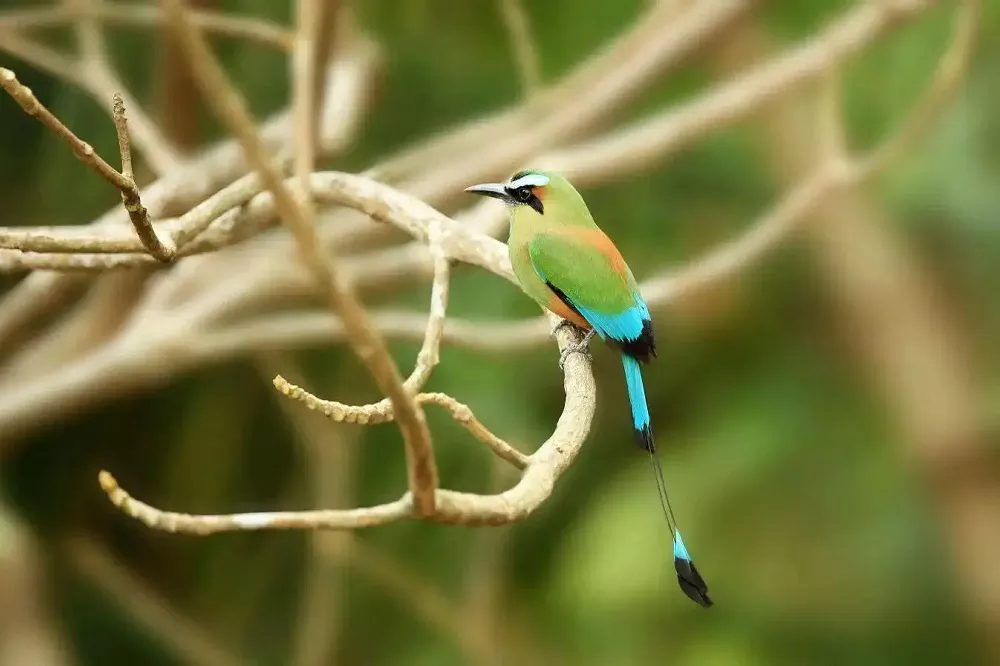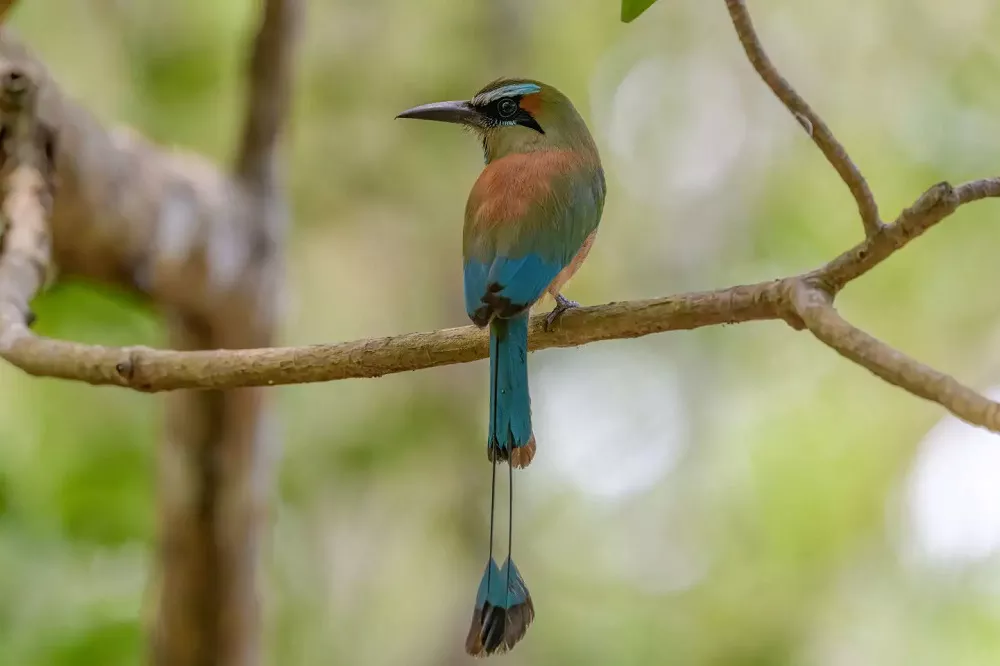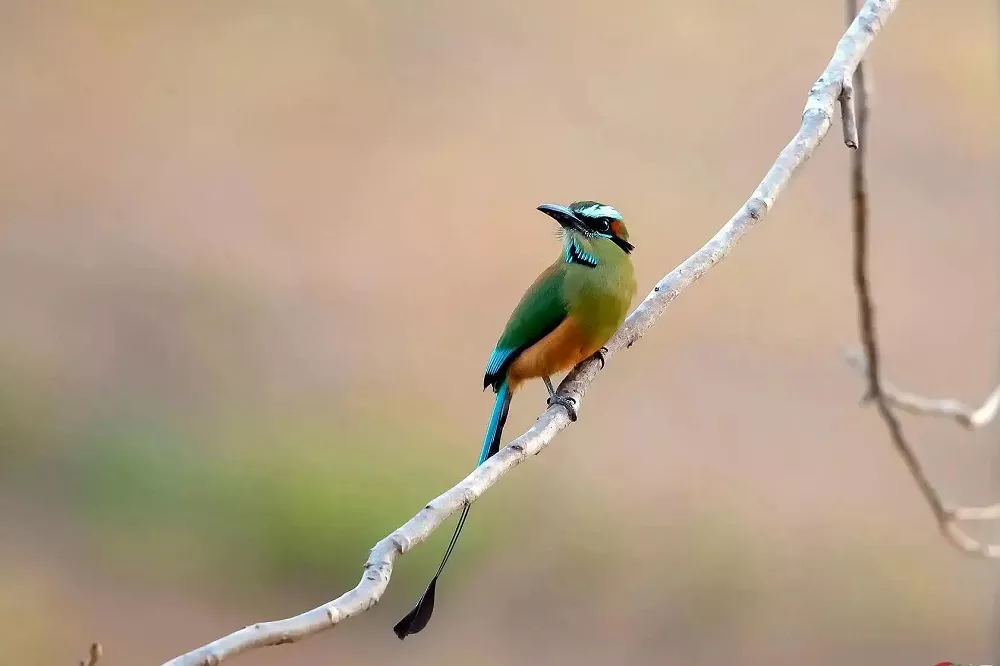Every nation has a unique symbol that reflects its identity, culture, and heritage. In El Salvador, one of the most beautiful and beloved symbols is El Salvador national bird, the Turquoise-browed Motmot. Locally, it is often called the Torogoz. This colorful bird is not only admired for its stunning appearance, but also respected for its cultural importance, symbolism, and ecological role.
The Turquoise-browed Motmot represents freedom, beauty, and natural diversity. It is a bird that inspires poets, artists, and nature lovers. Its brilliant feathers and calm presence make it one of the most recognized birds in Central America. In this article, we will explore the history, characteristics, symbolism, and conservation of the Turquoise-browed Motmot.
Introduction to the Turquoise-browed Motmot
The Turquoise-browed Motmot, scientifically known as Eumomota superciliosa, is a medium-sized bird. It is famous for its bright blue and green feathers, especially the blue “brow” above its eye and the turquoise coloring on its wings and tail. This bird is also known for its long tail feathers that have racket-shaped tips.
The Turquoise-browed Motmot lives in Central America, mostly in countries like El Salvador, Honduras, Guatemala, and Nicaragua. However, it is most strongly associated with El Salvador because it was officially declared the national bird there in 1999.
Physical Characteristics of the Turquoise-browed Motmot
The Turquoise-browed Motmot is easy to recognize because of its distinct colors and shape. Let’s take a closer look at its physical features:
Size and Shape
- The bird measures approximately 30 to 38 centimeters (12 to 15 inches) in length.
- It has a large head and a strong, slightly curved beak.
- Its tail is very long, almost half the length of its body, and it ends in two unique feather tips that look like rackets.
Colors and Markings
- The main body feathers are a mix of bright green and blue.
- It has a bright turquoise stripe or “brow” above each eye, which is its signature feature.
- The throat and chest are a rich reddish-orange color.
- The tail feathers are vibrant, with green and blue hues ending in the black racket tips.
These vivid colors help the Turquoise-browed Motmot stand out in the forests and open woodlands where it lives.
Habitat and Distribution
The Turquoise-browed Motmot is mostly found in lowland areas of Central America. Here are some key points about where it lives and thrives:
- Preferred Habitats
- Open woodlands
- Tropical dry forests
- Scrublands and edges of forests
- Gardens and agricultural areas near forests
The bird avoids deep forest and very dense jungle, preferring more open spaces where it can easily find food and watch out for predators.
Geographical Range
In El Salvador, this bird is nearly everywhere, from coastal areas to inland lowlands. It is one of the most commonly seen birds in the country’s rural and semi-urban settings.
The presence of the Turquoise-browed Motmot throughout El Salvador makes it a familiar and loved species for many Salvadorans.
Behavior and Diet of the Turquoise-browed Motmot
The Turquoise-browed Motmot has interesting behaviors that make it a fascinating bird to observe. It is an active and intelligent bird with unique feeding and nesting habits.
Feeding Habits
- The bird mainly eats insects such as beetles, grasshoppers, and caterpillars.
- It also feeds on small reptiles, fruits, and seeds.
- It hunts by sitting quietly on a branch and watching for moving prey on the ground or in the air. When it spots food, it swoops down to catch it with its beak.
Nesting and Reproduction
One of the most unusual things about the Turquoise-browed Motmot is its nesting behavior:
- They dig long tunnels in earthen banks or flat ground, often near rivers or roads.
- The tunnels can be up to 1 to 1.5 meters (around 3 to 5 feet) deep.
- At the end of the tunnel, the birds make a nest chamber where they lay their eggs.
- Both parents take care of the eggs and the baby birds.
This underground nesting style helps protect their young from predators and harsh weather.
Unique Behavior: Tail Wagging
The Turquoise-browed Motmot has a special way of communicating through movement:
- The bird often swings its tail back and forth like a pendulum.
- Scientists believe this motion warns other animals that the bird has noticed them, signaling it is alert and ready to escape.
- This behavior may help avoid conflicts with predators and rivals.
Cultural Importance and Symbolism in El Salvador
The Turquoise-browed Motmot is very important to the people of El Salvador. It is not just an ordinary bird but a symbol that represents the country’s natural beauty and spirit.
Symbol of Freedom
Unlike many birds, the Turquoise-browed Motmot does not live well in cages. It prefers to fly free in the wild. This behavior has made it a symbol of freedom and independence. Salvadorans see the bird as a reminder of the value of liberty and natural beauty.
Representation in Art and Literature
In Salvadoran culture, the Torogoz often appears in paintings, crafts, poetry, and songs. Local artists use its bright colors to represent hope and pride. The bird is also featured in traditional legends, where it is described as wise, noble, and free-spirited.
National Symbol
El Salvador officially declared the Turquoise-browed Motmot its national bird in 1999. The decision was made to highlight the country’s rich biodiversity and to protect this species as part of national heritage. Since then, the Torogoz has been a strong emblem of Salvadoran pride.
Conservation Status and Threats
The Turquoise-browed Motmot is not currently endangered. According to conservation organizations, it is classified as a species of “Least Concern.” However, some factors could threaten the bird if not managed properly.
Threats to the Turquoise-browed Motmot
Habitat loss: Deforestation and urban development reduce the natural spaces where the bird can live and nest.
Pesticide use: Chemicals used in farming can reduce the number of insects the motmot feeds on.
Human disturbance: Construction and traffic near nesting sites can disrupt breeding.
Conservation Efforts
Efforts to protect the Turquoise-browed Motmot include:
- Establishing protected areas and nature reserves
- Promoting sustainable agriculture and forestry practices
- Educating communities about the importance of wildlife protection
By supporting these efforts, El Salvador is helping to ensure that its national bird continues to thrive for future generations.
See Also: The National Bird of Japan: The Green Pheasant
Interesting Facts About the Turquoise-browed Motmot
Here are some fun and interesting facts about this beautiful bird:
1. It is known by different names across Central America. In El Salvador, it is the Torogoz, while in Nicaragua it is called Guardabarranco.
2. The rackets on the tail feathers are created by the bird preening and removing the barbs from part of the tail feathers.
3. Turquoise-browed Motmots often mate for life and are seen together in pairs.
4. Their call is a deep, low “hoot” sound that is repeated and can be heard in their habitat.
5. The motmot’s tail wagging is one of the few examples of a bird using body language similar to mammals.
How to Spot the Turquoise-browed Motmot in El Salvador
If you want to see the Turquoise-browed Motmot in its natural habitat, here are some tips:
Best Places to Look
- National parks and reserves such as El Imposible National Park and Montecristo National Park
- Rural areas with open woodlands
- Gardens and areas near forests in towns and villages
What to Look For
- Bright blue and green feathers with a turquoise eyebrow
- Long tail with racket tips
- Swinging tail behavior
- Listen for the deep hooting call
Bring binoculars and a camera if possible, and always respect the bird and its environment by observing quietly and from a distance.
Conclusion
The Turquoise-browed Motmot, or Torogoz, is a jewel of El Salvador. With its bright feathers, elegant tail, and calm spirit, it has won the hearts of the Salvadoran people. It is not only the national bird but also a symbol of freedom, pride, and natural heritage.
As El Salvador continues to grow and change, the Torogoz remains a constant reminder of the importance of protecting nature. By respecting and conserving this bird, future generations will continue to enjoy its beauty and meaning.
The Turquoise-browed Motmot is not just a bird of El Salvador. It is a living symbol of the country’s soul.




 Facebook
Facebook  Instagram
Instagram  Youtube
Youtube 